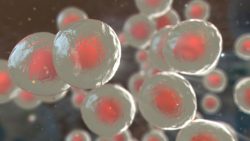 One of the challenges of aging is the ability of skin to regenerate. Older skin does not heal from wounds as well and the cellular and molecular mechanisms are largely unknown. A team from Japan has discovered a mechanism that explains why this can happen, and, therefore can be repaired.
One of the challenges of aging is the ability of skin to regenerate. Older skin does not heal from wounds as well and the cellular and molecular mechanisms are largely unknown. A team from Japan has discovered a mechanism that explains why this can happen, and, therefore can be repaired.
The published study has revealed the capability of skin stem cells to repair skin following an injury and could be associated with their ability to move in the direction of the injured skin.
The function of stem cells in the skin, which are known as keratinocyte cells, is to regenerate skin and also help wound closure by a process known as re-epithelialization. Computer simulation and live imaging experiments indicated that human skin stem cell motility is combined with their regenerative and proliferative capacities. Older skin stem cells have a notably reduced motility.
In order to fully understand the mechanisms that cause the old skin stem cells to have reduced motility, the team used young mice (12 weeks old) and older mice (19-25 months old) to compare the healing of wounds and proliferative ability of their skin stem cells. They found that a very specific molecule, EGFR, will drive skin stem cells mobility and, subsequently, the EGFR signaling was reduced in the older skin stem cells. EGFR prevents the deterioration of a special collagen type called COL17A1, which is required for holding the layers of skin together.
COL17A1 synchronizes the movement of skin stem cells to the injury by regulating keratin and actin filament networks that are in the cells. The team discovered that with age, there is a decrease in EGFR signaling which leads to lower levels of the COL17A1 and skin stem cells with less mobility that are also less able to re-epithelialize the skin.
In advanced aging, a decrease in skin wound healing is linked to the development of chronic non-healing disorders such as pressure sores and diabetic ulcers. Stabilizing COL17A1 through regulating its proteolysis is an encouraging therapeutic approach to help improve the decline in skin regeneration that is noted with age and that often leads to substantial issues such as ulcers. Further research is still needed.
The current research emphasizes the mechanisms underlying the healing of wounds and could lead to the development of novel therapeutic treatments to improve the skins regenerative capacity.
To view the original scientific study click below:
EGFR-mediated epidermal stem cell motility drives skin regeneration through COL17A1 proteolysis





